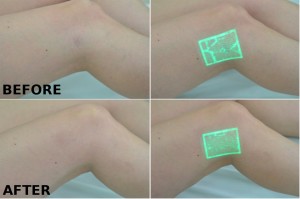Spider veins or telangiectasias are the commonest clinical CEAP class, documented as C1, with many patients seeking treatment to improve the appearance of their legs. They may be blue or red and are distinguished from reticular veins which have a profile. If they are present around the ankle, then they may be part of a corona phlebectatica paraplantaris which is more indicative of underlying chronic venous insufficiency. Injection sclerotherapy is considered the gold standard way of treating these veins and multiple sessions are often required if the veins are extensive. Patients should be warned of potential side-effects like pigmentation, matting, recurrence and rarely, injection site ulceration, embolisation and allergic reactions.
KASUO MIYAKE The key to achieve a perfect and long lasting result on the treatment of telangiectasias is an accurate diagnosis. Even when telangiectasias are on the lateral part of the thighs or legs, they may be connected to a higher pressure vein like a perforating vein. The first step in the evaluation is a complete duplex ultrasound investigation from groin to foot. Asymptomatic patients may have saphenous vein reflux which may require treatment first. This is because the presence of reflux may impede a good outcome. The second step is to search for feeder veins and a good way to do this is by using an augmented reality (AR) device (VeinViewer, Accuvein). I have been using them since the first VeinViewer prototype in 2005. One conclusion is that if telangiectasias are grouped, there is at least one hidden feeder vein. If the feeder veins are treated then the aesthetic result is better and the recurrence lower. It is important to use very low injection pressures when treating telangiectasias because sclerosant may be forced into small arterioles by a process of veno-arteriolar reflux which can cause skin ulceration.
Before and after Cryo-Laser and Cryo-Sclerotherapy (CLaCS) guided by AR. Telangiectasias and feeder veins were treated.
